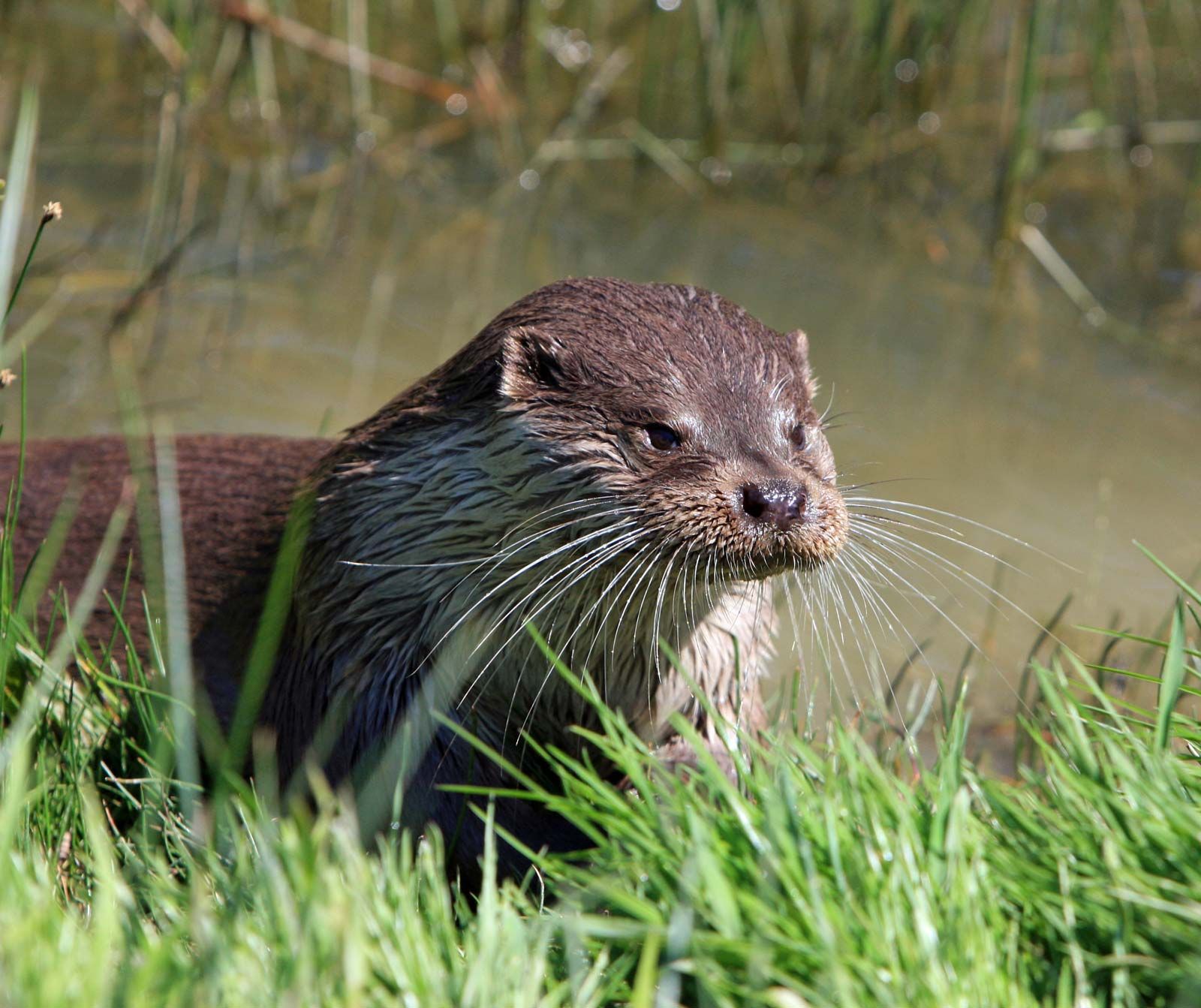Rethinking Otter Conservation: A Turning Point For Wyoming's Wildlife

Table of Contents
The Current State of Otter Populations in Wyoming
Historically, North American river otters ( Lontra canadensis) thrived throughout Wyoming's diverse waterways. However, decades of habitat degradation, pollution, and other human impacts have significantly reduced their numbers. Specific locations, such as the upper reaches of the Green River and sections of the Snake River, are showing particularly concerning population declines. This decline impacts not only the otters themselves but also the overall health of Wyoming's aquatic ecosystems.
- Declining fish populations (prey base): Reduced fish stocks due to overfishing, habitat loss, and water pollution directly impact otter survival, as fish form the cornerstone of their diet. A healthy otter population indicates a thriving aquatic ecosystem.
- Water quality degradation impacting otter health: Pollution from agricultural runoff, industrial discharge, and urban development contaminates waterways, affecting otter health and reproductive success. Toxic substances can bioaccumulate in the otters' prey, leading to long-term health problems.
- Loss of riparian habitat due to development and agricultural practices: The destruction of riparian zones – the areas of vegetation along riverbanks – eliminates crucial otter habitat, including denning sites, foraging areas, and resting places. This habitat loss fragments otter populations, making them more vulnerable.
- Impacts of climate change on water availability: Changing precipitation patterns and increased drought frequency are reducing water levels in Wyoming's rivers and streams, shrinking otter habitat and impacting prey availability. This exacerbates existing threats to otter populations.
Challenges to Effective Otter Conservation in Wyoming
Implementing effective Otter Conservation strategies in a vast state like Wyoming presents considerable challenges. The state's diverse landscape, ranging from high-elevation mountain streams to low-elevation plains rivers, necessitates region-specific approaches. Further complicating matters are conflicting land uses and limited resources.
- Balancing conservation with agriculture and resource extraction: Balancing the needs of otter conservation with the economic interests of agriculture and resource extraction industries requires careful planning and collaboration. Finding solutions that benefit both wildlife and human communities is crucial.
- Securing funding for long-term monitoring and research: Consistent funding is essential for implementing effective conservation measures, including population monitoring, habitat restoration, and research into the specific threats facing Wyoming otters. Long-term commitments are crucial for achieving sustainable results.
- Educating the public about the importance of otter conservation: Public awareness is crucial for generating support for otter conservation efforts. Educational programs and outreach initiatives can help foster a sense of responsibility and encourage community involvement.
- Enforcing existing laws protecting otters and their habitat: Effective enforcement of existing laws protecting otters and their habitat is crucial to deterring illegal activities such as poaching and habitat destruction. Stronger law enforcement and community vigilance are essential.
Innovative Conservation Strategies for Wyoming Otters
Successful conservation initiatives from other states and regions can provide valuable insights for Wyoming. Adapting proven strategies to Wyoming's unique environment is vital for the success of otter conservation efforts.
- Riparian habitat restoration projects along key waterways: Restoring degraded riparian zones through tree planting, erosion control, and careful grazing management can significantly improve otter habitat. This approach enhances both the quantity and quality of available habitat.
- Collaboration with ranchers and landowners to implement sustainable land management practices: Working closely with landowners to encourage sustainable grazing practices and buffer zone creation around waterways can mitigate the impacts of agriculture on otter habitat. Incentive programs and technical assistance can support these collaborations.
- Public awareness campaigns emphasizing the ecological role of otters: Highlighting the importance of otters as indicators of ecosystem health and their role in maintaining biodiversity can increase public support for conservation initiatives. Engaging storytelling and educational materials are key components.
- Citizen science initiatives to monitor otter populations and habitat use: Involving the public in otter monitoring efforts through citizen science projects can provide valuable data on otter distribution, abundance, and habitat use, enhancing the effectiveness of conservation actions.
- Research focusing on understanding the specific threats to Wyoming otters: Targeted research focusing on understanding the specific threats facing Wyoming otters, including the impacts of pollution and climate change, is essential for developing effective conservation strategies. This research will inform decision-making and improve conservation outcomes.
The Role of Community Engagement in Otter Conservation
Community engagement is paramount for successful Otter Conservation in Wyoming. Involving local communities in conservation efforts fosters a sense of ownership and responsibility, leading to greater support for long-term initiatives. Successful community-based conservation programs often involve local residents in monitoring efforts, habitat restoration projects, and educational outreach. This approach not only enhances the effectiveness of conservation programs but also strengthens community bonds and promotes environmental stewardship.
The Future of Otter Conservation in Wyoming: A Call to Action
The future of Otter Conservation in Wyoming hinges on sustained and improved conservation efforts. By implementing innovative strategies, strengthening collaborations, and fostering public awareness, Wyoming can ensure the long-term survival of these vital members of its ecosystem.
- Continued monitoring of otter populations and habitat: Ongoing monitoring is crucial to track population trends, identify emerging threats, and assess the effectiveness of conservation interventions. This continuous data collection allows for adaptive management strategies.
- Increased funding for conservation programs: Securing adequate and sustained funding is paramount for supporting long-term conservation initiatives, including research, habitat restoration, and education programs. This funding is vital for the success of all conservation efforts.
- Strengthened collaboration among government agencies, conservation organizations, and local communities: Effective Otter Conservation requires a collaborative approach involving government agencies, conservation organizations, landowners, and local communities. This unified front ensures synergistic efforts and maximizes impact.
- Comprehensive habitat protection and restoration plans: Developing comprehensive habitat protection and restoration plans, incorporating scientific data and stakeholder input, is crucial for ensuring the long-term viability of otter populations in Wyoming. This strategic planning addresses various threats and ensures lasting impact.
Conclusion:
Otter Conservation in Wyoming faces significant challenges, but also presents incredible opportunities. By embracing innovative strategies, fostering strong community partnerships, and securing adequate funding, we can work together to secure a brighter future for these important animals and the ecosystems they inhabit. Support Wyoming's efforts in Otter Conservation. Learn more about how you can help protect these fascinating animals and their habitat. Get involved in local conservation initiatives and help make a difference for Otter Conservation in Wyoming.

Featured Posts
-
 Nyt Wordle Hints And Answer April 8 1389
May 22, 2025
Nyt Wordle Hints And Answer April 8 1389
May 22, 2025 -
 Real Madrid In Yeni Teknik Direktoerue Icin Listede Kimler Var
May 22, 2025
Real Madrid In Yeni Teknik Direktoerue Icin Listede Kimler Var
May 22, 2025 -
 Confronting Your Inner Love Monster
May 22, 2025
Confronting Your Inner Love Monster
May 22, 2025 -
 Blake Lively Addressing Recent Claims And Public Perception
May 22, 2025
Blake Lively Addressing Recent Claims And Public Perception
May 22, 2025 -
 Emergency Responders Tackle Significant Used Car Lot Fire
May 22, 2025
Emergency Responders Tackle Significant Used Car Lot Fire
May 22, 2025
